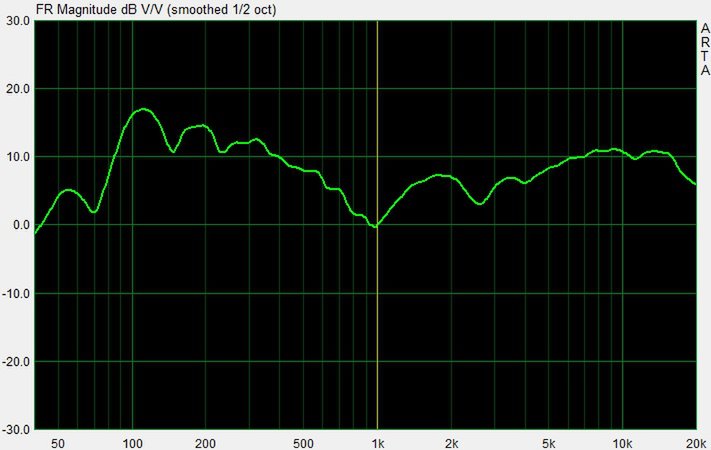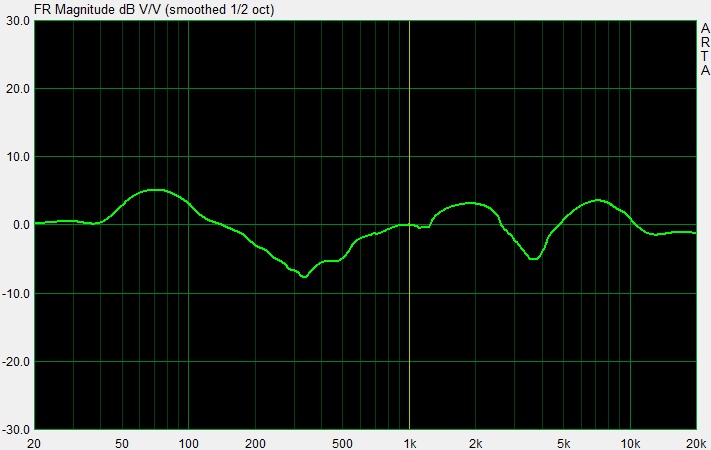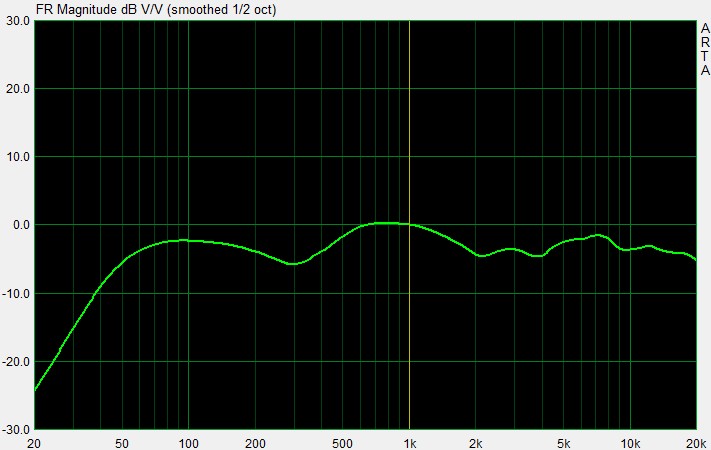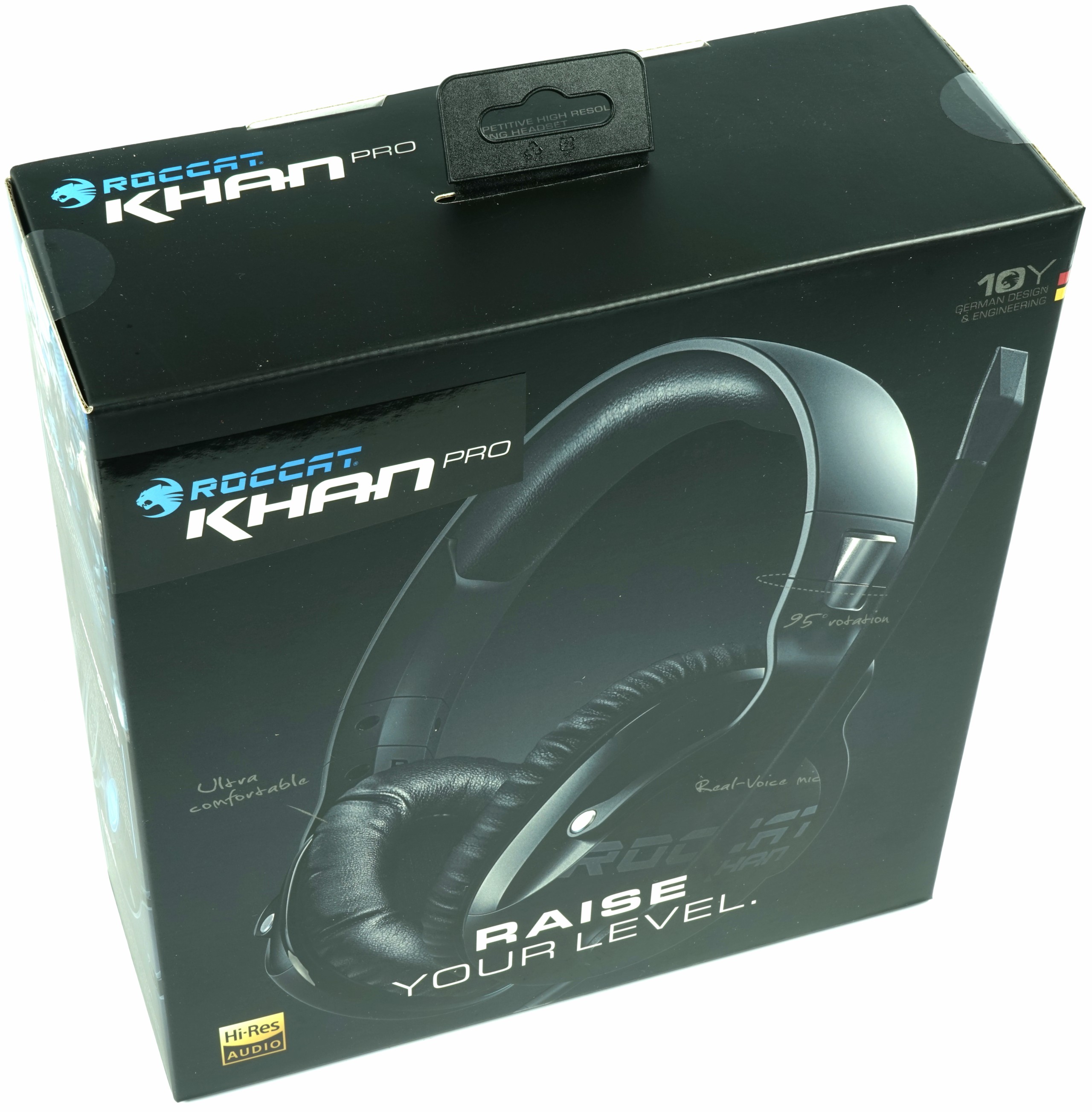Microphone measurement and sound check
First of all, we can also measure the frequency range of the microphone to accommodate the feedback of the readers. For this we use our measuring room again, but we virtually reverse the process. Of course, a true reciprocity calibration as a starting point exceeds our current possibilities and the effort far exceeds the benefits. That is why we have sought a compromise.
However, since we have a calibrated measuring microphone, a comparison measurement and the calculation of the differences can at least produce a curve that is easily usable for our purpose. So it is not the exact frequency response of the microphone, we would not presume that, but a meaningful approximation, which also underpins our subjective impression.
Measuring and audible, it can be seen that it is under approx. 100 Hz gives a kind of low-cut. This is also important because the microphone is already a bit bass-heavy. A rumbling can thus still be avoided in an acceptable way. The speech intelligibility is good to very good, the level is sufficiently high. Here you should still make a slight level increase in the system settings (the sound card) if necessary.

What sounds very pleasant are sibilants or Hissing, because the high tone is not overly dominant. The sound is rather warm, also due to the strong upper bass and the present lower middles.
Headphone measurement
As we test, we have already explained in the basic article "Gaming Headsets: Myth, Truth and How we Test" very detailed and transparent, because with the usual audio-swirl of bass thunderstorms and high-pitched whips you can't really get any further. You have to be able to listen subjectively well and measure at the same time. Let us start with the latter.
If you look at the original curve, it doesn't even look bad except for two dents. Both in the lower and upper boundary ranges you can see that the frequencies of our desire are still present there in decent levels. We deliberately did not record the upper limit of 44 KHz, because you measure crap quickly, especially with semi-professional equipment. So anything else, just not what matters. Especially since, as we all know, we are not bats either. The 44 KHz awarded are therefore rather hypothetical in nature and fabric for the PR sewing box.

The kink at just over 325 Hz in the lower middle sits is now not mega-dramatic and obviously results from a bass lift (mechanical sounding) by a targeted tuning of the resonant body. As a result, this usually also provokes a slipping of the subsequent frequency range. Also at approx. 3.6 KHz we see a rather driver-related solution, whereby the human ear is one of the most sensitive in this area. This, too, is already subjective but almost evened out and can be easily corrected by an equalizer.

We also play something with the low bass by lowering it. Sounds paradoxical, but it isn't. This also increases the level strength enormously, which always suits us. Less klirr, cleaner tips and a significantly increased resolution are a nice bread with which you like to feed your ears.
Subjective listening experience – Original against optimization
Let's also test subjectively what you have in the original and after the manual EQ adjustment on the ear. We used to operate the headset continuously for two days as usual at a source with a decent level, in order to give the one-game fanatics a chance.
Bass
Test the lowest bass in the subcontraoctave (16.4 Hz to 32.7 Hz) with a recording of Bach's Toccata and Fugue in D minor (19 and 25 Hz) and the Festival Overture 1812 by Tchaikovsky (10 Hz and 12.5 Hz). The same applies to the lower ranges of the contraoctothe (32.7 to 65.4 Hz). The big bass drum (kick drum), which in the U-music is a welcome companion and usually on approx. 55 to 60 Hz, this assessment will then be rounded off.
The bass is in the original grotto-deep and almost black, with our correction from about 45 Hz downwards already audibly restrained, but still enough present. With the new setting, everything seems even more nuanced and clear, but without losing noticeable pressure, on the contrary. From approx. 30 Hz it gets a bit thin with sound correction down, but that doesn't really matter. The contraoctave is still completely present, which will certainly calm the last deep-rider a little. If, on the other hand, you like it dullly blubbering and rolling-rolling, leave the controller at the original level.
The large bass drum comes sufficiently crisp and the level strength is also right for this price range. The settling behavior is also fine and overall it can be said that the bass is definitely not one of the downsides of the Roccat Khan Pro in both interpretations.
The upper bass up to 150 Hz, in which also the Great Octave (65.4 to 130.8 Hz) is located, houses the basic language frequency of the male voice and decides very strongly on the true-to-life reproduction of male vocals.
This area already sounds reasonably balanced in the original and natural, albeit a little too greased. The male vocals are (almost too) full and warm, the instruments are hardly distorted. Overall, the resolution is very good and also does not allow sources playing too dominant to perform well and even locate them.
Frequency range
The lower middles (also basic tone range) are approx. 150 to 400 Hz. Together with the already mentioned upper bass, this area plays a very important role for the subjectively perceived heat or bass. Fullness of the sound. The basic language frequency of female voices can be found in this area.
Female vocals get to the point very neatly. The timbre of the vocals and recorded instruments in the original goes more neutrally and upwards even into the cool, but without appearing immediately analytical. However, the further course towards the 500 Hz mark is already much better with the optimized profile, because it can almost completely eliminate the nasty dent at 325 Hz.
The manually created setting then lets the tuning slide back in the direction of warm and pleasant – actually a must for music lovers, although it should be more sausage for the pure gamer. Klaus-Kevin certainly takes the ice box with a hand kiss.
The upper mids between 400 Hz and about two KHz contain a mark at a KHz, which is still considered a reference for many measurements. Unfortunately, this is often noticeable with cheaper devices, as manufacturers often try to overemphasize this frequency. This area does not play an insignificant role in gaming either, and balanced playback contributes significantly to good spatial resolution.
The drama and acoustic valley of the big tears is behind us and it goes uphill again. The instruments offer the required nuances and also the resolution is acceptable to good. Many details can inspire and the stage, as well as the subjectively perceived quality of the spatial resolution are on a good level.
For music lovers: An orchestra (purely subjectively speaking) still seems far enough positioned, even if individual, rather quieter sources at high overall levels cannot always be located with certainty. Here you can see that it is not hi-fi headphones for the friends of the grand finale Furioso. For gamers: the whole thing does not stop the game, but is once again our usual whining at a rather high level.
High-pitched range
Between two and about 3.5 KHz, human hearing is most sensitive, especially since this area of the lower heights is responsible for the good overtone reproduction of the human voice. This frequency range is crucial for the recognition of a voice or instrument; in this context, one also speaks of the respective timbre.
The manual setting suits the original timbre and everything sounds a bit more natural and neutral, even if the original design is tolerable. Better is always possible and above all the location in the game is in both interpretations at any time at the level of the action. Sure, it might be even better (even), but there are significantly worse headsets for similar money. In the right relation, so it fits.
The middle heights (3.5 to six KHz) decide on the sound or failure of the speech reproduction as a whole, because the S- and hissing (Sibilants) fall into this range. The upper heights then reach up to approx. ten KHz to move into the super high tone.
High and super high tone are dominant, no question. However, nothing drifts into the metallic and lace, which would lead to over-emphasis and blow-out noises. It sounds largely neutral, which can please. The specified frequency curve from 20 Hz to 44 KHz is realistic at least up to the limit of 20 KHz we set, even if you cannot set a real tolerance range for the course. The tuning is a tick too bass-heavy for our taste, but that's exactly what's trending right now.
Summary and conclusion
 The 99 Euros are a very confident announcement when you look at material and performance. On the other hand, we would see it very well positioned in the EUR 80 area, but not above it. If the price were right now, it would even be worth an explicit buying tip, but in the 100-euro class, the material appearance must simply be right.
The 99 Euros are a very confident announcement when you look at material and performance. On the other hand, we would see it very well positioned in the EUR 80 area, but not above it. If the price were right now, it would even be worth an explicit buying tip, but in the 100-euro class, the material appearance must simply be right.
That doesn't mean that the Roccat Khan Pro is a haptically or visually under-served cheap home, God forbid. But it's like a higher-priced restaurant, where not only the quality of the steak counts, but also the freshness of the garnish right down to the dressing. But that's exactly what the Roccat Khan Pro is doing. Small things, but the price…
We can only advise Roccat to go into lockdown here again and not to close itself off from the realities of the market and the competitors. Then, in addition to a praise of the top note, there is also a positive mention of the acoustic-culinary overall package.
































Kommentieren